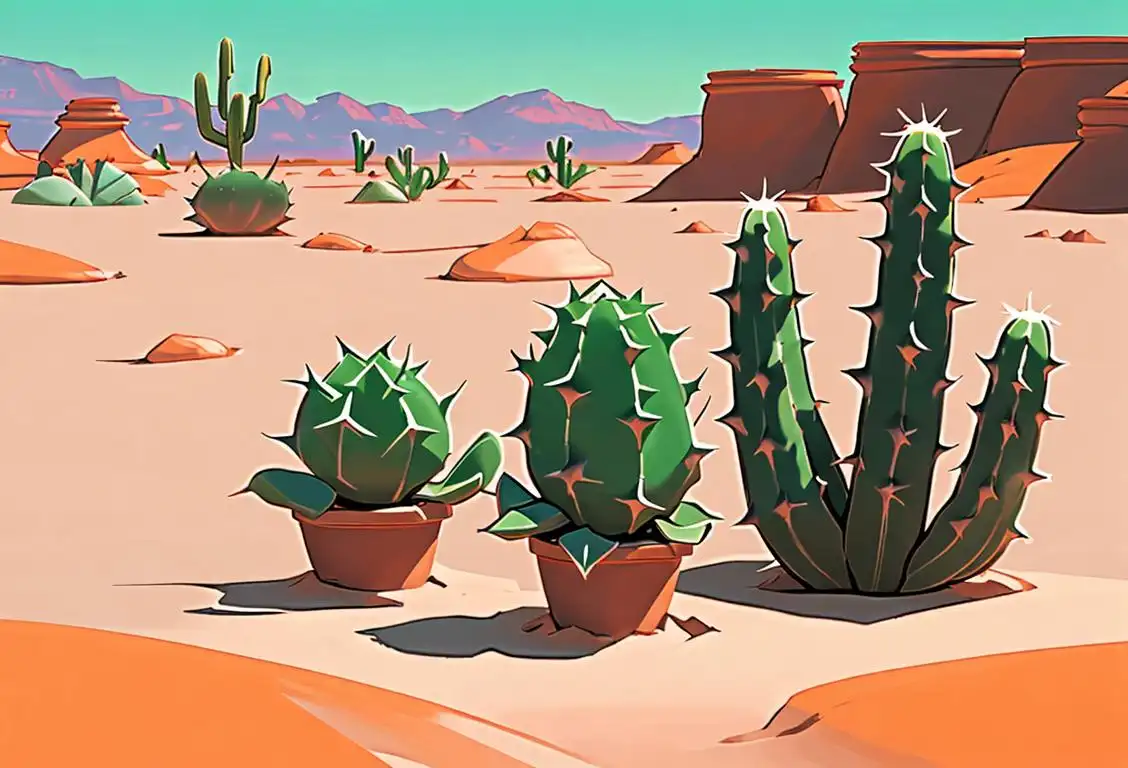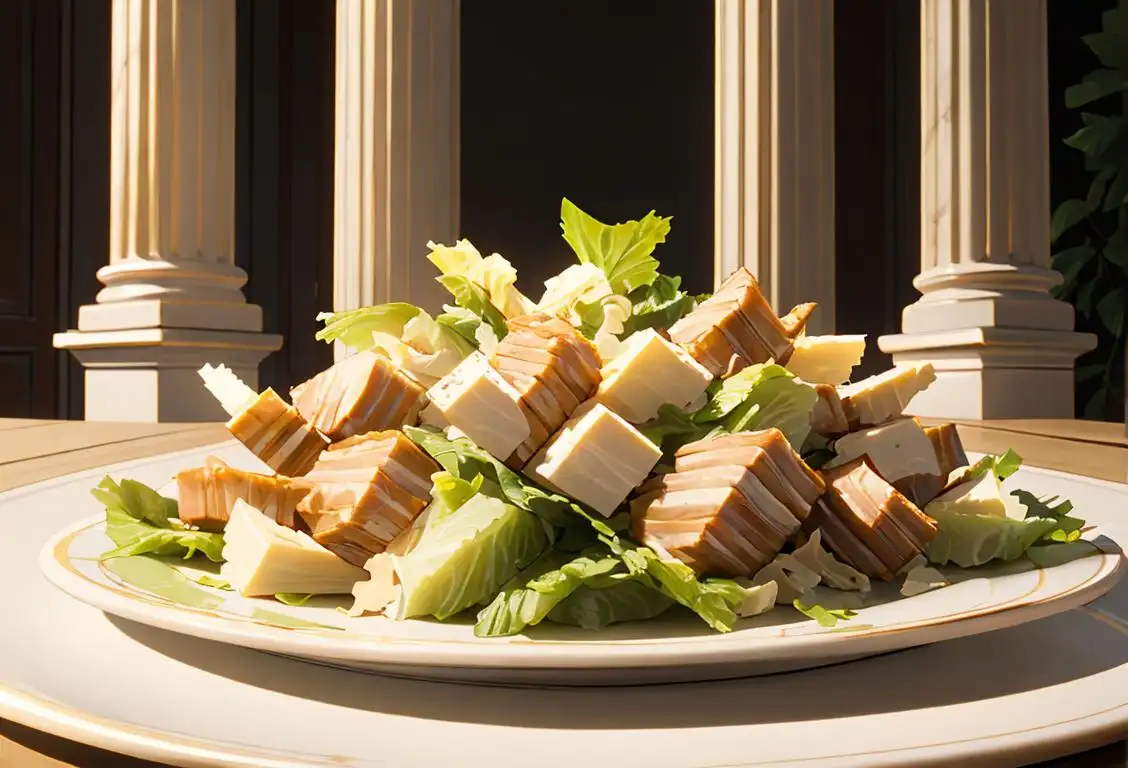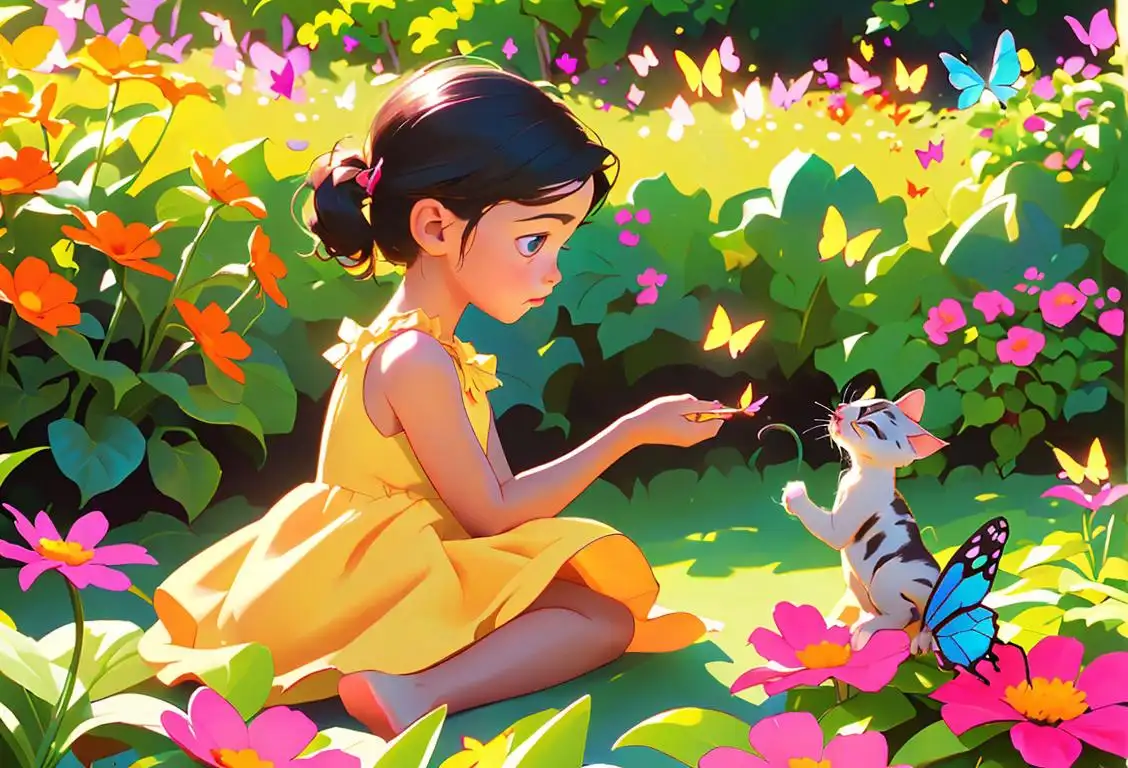National Cactus Day

Stick around and we hope you'll be 'prickled' with interest as we delve into the spiny and surprising world of National Cactus Day! This day is a 'sharp' reminder of the fascinating world these desert dwellers inhabit.
When is Cactus Day?
It's national cactus day on the 10th May.
Origins of the Pointy Holiday
The internet history of National Cactus Day is as prickly as the plants themselves! Although there's no 'concrete' historical origin, our data suggests an upswing in appreciation for our spiky friends around 10 May 2019 with a grand total of 74 recorded mentions online.
Why Do We Love Cacti?
Well, these hardy little fellas are more than just thorns and prickles. Cacti are resilient and adaptable—they defy the odds by thriving in the most arid areas in the world. Dehydrated? No problem. Scorching heat? Just another sunny day. They symbolize endurance and the ability to stand tall amidst adversity.
Apart from Sitting Around Looking Sharp
What's the real charm of these prickly plants? While they might not be the cuddliest vegetation around, their unique shapes and sizes are a visual feast for plant lovers and photographers alike. Plus, some of them can surprise you with the most vibrant blossoms, adding a pop of color to any room.
Celebrating National Cactus Day
How can you celebrate such a day, you ask? You can adopt a cactus, adding a touch of the desert to your home decor. Or perhaps compile a playlist of songs for your new plant buddy—after all, they're great listeners!
History behind the term 'Cactus'
1753
Introduction to the term 'cactus'
The term 'cactus' was first introduced in 1753 by the Swedish botanist Carl Linnaeus in his book 'Species Plantarum'. Linnaeus used the word 'cactus' to describe a group of succulent plants with thick, fleshy stems and prickly spines. The term was derived from the Latin word 'cactus', which means 'spiny plant'. This marked the beginning of the formal classification of these unique plants.
1828
Cactaceae family recognized
In 1828, the French botanist Augustin Pyramus de Candolle formally recognized the family Cactaceae, which includes all known species of cacti. This classification helped establish cacti as a distinct group of plants. It provided a framework for further understanding and study of cacti and their unique characteristics.
1846
Discovery of the concept of succulence
In 1846, the German botanist Wilhelm Pfeiffer introduced the concept of succulence in cacti. He observed that cacti have adapted to arid environments by developing specialized water-storage tissues, such as their fleshy stems and leaves. This adaptation allows cacti to survive in harsh desert conditions by efficiently storing water for extended periods.
1850
Popularization of cacti through greenhouse cultivation
In the mid-19th century, cacti started gaining popularity among horticulturists and plant enthusiasts. Greenhouse cultivation of cacti became prevalent, allowing people to cultivate and study these unique plants in a controlled environment. Cacti's ability to thrive in indoor conditions and their fascinating shapes and colorful blooms attracted attention, making them sought-after specimens for collectors and botanical gardens.
1905
Incorporation of cacti in art and design
During the early 20th century, cacti began to inspire artists and designers. Their distinct forms, textures, and vibrant flowers became motifs in various art movements. Cacti-themed artwork, pottery, and textiles became popular, reflecting the growing fascination with these plants. The integration of cacti into art and design helped to further promote their cultural significance.
1934
Cacti as symbols of the American Southwest
Cacti became iconic symbols of the American Southwest during the early 20th century. The resilience and adaptability of cacti to survive in arid landscapes resonated with the spirit of exploration and conquering the challenging terrains of the American West. Cactus imagery and references appeared in literature, films, and advertising, solidifying their association with the region's identity.
1960
Cacti in popular culture
Cacti's popularity surged in the 1960s as they became an integral part of the hippie and counterculture movements. Cacti, with their unique appearance and symbolism of resilience, embodied the spirit of nonconformity and the pursuit of alternative lifestyles. Cacti motifs appeared on album covers, clothing, and psychedelic art. They became emblems of the era's unconventional ideas and connection with nature.
Did you know?
Did you know that there is a type of cactus known as the 'Mother-in-Law's Cushion'? It's definitely not as comfy as it sounds!Tagged
Fun Awareness Endurance Adaptability NatureFirst identified
10th May 2015Most mentioned on
10th May 2019Total mentions
74Other days
Cactus Day
Tit Day
Teachers Day
Pledge Of Allegiance Day
Tattoo Day
Intern Day
Womens Day
Caesar Day
Kitten Day
Vanilla Ice Cream Day








